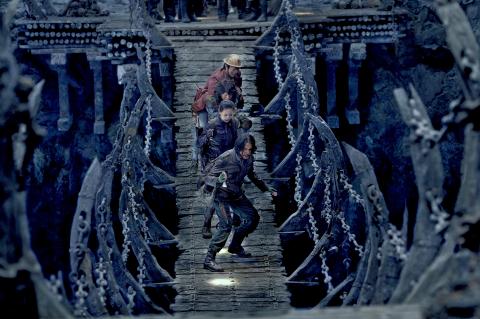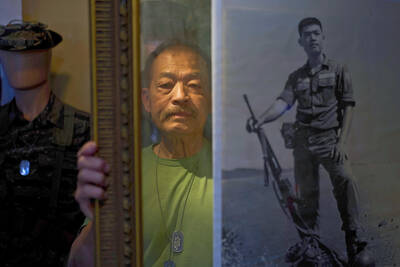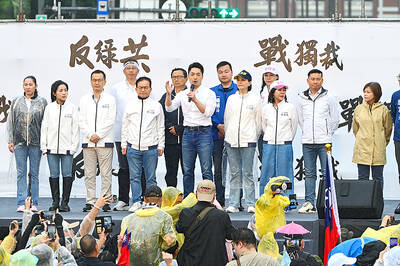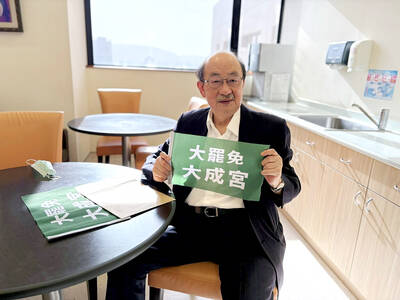It makes no sense to expect Mojin — the Lost Legend (尋龍訣) to make sense. The latest production by Chinese director Wuershan (烏爾善) is an adventure-fantasy movie designed to thrill and entertain, depicting a bunch of action heroes braving zombie armies in search for a stone with magic power. Based on Chinese writer Zhang Muye‘s (張牧野) immensely popular adventure series, Ghost Blows Out the Light (鬼吹燈), this is a precisely-crafted work of entertainment featuring a star-studded cast and stunning CGI effects, showing that China is catching up with Hollywood in manufacturing blockbuster entertainment.
The film opens with three adventurers entering a subterranean mausoleum. Through off-screen narration by Wang (Huang Bo, 黃渤), we learn that they are Mojin Xiaowei (摸金校尉), an ancient school of tomb raiders once commanded by Chinese emperors.
The story cuts to New York City in the late 1980s, where Wang and his two partners, Hu (Chen Kun, 陳坤) and Shirley (Shu Qi, 舒淇), now live, having retired from tomb raiding. Tired of hawking “Chinese treasures” in the city’s backstreet, Wang returns to his old trade by taking on a mission for a mysterious, wealthy businesswoman (Liu Xiaoqing, 劉曉慶), who wants an ancient meteorite called the Equinox Flower, which has the power to resurrect the dead and is believed to be buried in an ancient tomb of a Khitan princess in Inner Mongolia.

Photo courtesy of Vievision Pictures
The mission brings Wang’s mind back to 20 years ago, when he and Hu joined a communist youth group traveling through the vast steppes of Inner Mongolia, where Wuershan grew up, at the height of the Cultural Revolution. Here, the country’s communist past serves as a source of ridicule and laughs, humorously rendered in a sequence in which the communist youths, determined to rid the masses of superstition and old customs, go on trashing whatever is deemed traditional and end up being slaughtered by an army of dead Japanese soldiers-turned-zombies in a crypt.
The expedition leads the heroes back to the exact site where the bloodshed took place two decades ago, where they will find out what awaits them in the crypt.
Knowledge of the Cultural Revolution is not required to enjoy Mojin, as the movie is made to engage a global audience. Cultural particulars are turned into plot gimmicks as Chinese emperors’ mausoleums become the playground for the modern action heroes, who use Bagua (八卦), or the eight trigrams, to solve mysteries and hunt treasures.
The movie is lavish, packed with eye-dazzling action and fantastic plots, making it feel right at home among the Lara Croft: Tomb Raider films. Wuershan’s visual panache renders the whole film a pure spectacle, especially with the underground mausoleum, where the bulk of the story takes place.
There are doses of gore and thrill thrown in, as the zombies look vivid and fearsome but quickly crumble when being hit as if they had stepped out of The Mummy series.
Shu makes a gorgeous action heroine. She is athletic, agile and plays it cool most of the time. But her love-hate pas de deux with Chen’s character is stiff and tiresome. The occasional outburst of whining and pouting makes her not quite up there with Angelina Jolie’s Lara Croft.
Chen is cut out for a dashing action hero, albeit a rather indistinct one. Huang ends up stealing much of the attention with his strong presence, offering hyperactive comic relief along with his sidekick, played by Xia Yu (夏雨). The latter, however, carries a zaniness so overbearing that one wishes a zombie could knock him out and keep him unconscious till the end credits roll.

When the South Vietnamese capital of Saigon fell to the North Vietnamese forces 50 years ago this week, it prompted a mass exodus of some 2 million people — hundreds of thousands fleeing perilously on small boats across open water to escape the communist regime. Many ultimately settled in Southern California’s Orange County in an area now known as “Little Saigon,” not far from Marine Corps Base Camp Pendleton, where the first refugees were airlifted upon reaching the US. The diaspora now also has significant populations in Virginia, Texas and Washington state, as well as in countries including France and Australia.

On April 17, Chinese Nationalist Party (KMT) Chairman Eric Chu (朱立倫) launched a bold campaign to revive and revitalize the KMT base by calling for an impromptu rally at the Taipei prosecutor’s offices to protest recent arrests of KMT recall campaigners over allegations of forgery and fraud involving signatures of dead voters. The protest had no time to apply for permits and was illegal, but that played into the sense of opposition grievance at alleged weaponization of the judiciary by the Democratic Progressive Party (DPP) to “annihilate” the opposition parties. Blamed for faltering recall campaigns and faced with a KMT chair

Article 2 of the Additional Articles of the Constitution of the Republic of China (中華民國憲法增修條文) stipulates that upon a vote of no confidence in the premier, the president can dissolve the legislature within 10 days. If the legislature is dissolved, a new legislative election must be held within 60 days, and the legislators’ terms will then be reckoned from that election. Two weeks ago Taipei Mayor Chiang Wan-an (蔣萬安) of the Chinese Nationalist Party (KMT) proposed that the legislature hold a vote of no confidence in the premier and dare the president to dissolve the legislature. The legislature is currently controlled

As we live longer, our risk of cognitive impairment is increasing. How can we delay the onset of symptoms? Do we have to give up every indulgence or can small changes make a difference? We asked neurologists for tips on how to keep our brains healthy for life. TAKE CARE OF YOUR HEALTH “All of the sensible things that apply to bodily health apply to brain health,” says Suzanne O’Sullivan, a consultant in neurology at the National Hospital for Neurology and Neurosurgery in London, and the author of The Age of Diagnosis. “When you’re 20, you can get away with absolute